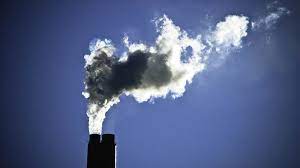
The United States is moving toward taking account of greenhouse gas (GHG) emissions in its federal procurement through two rulemaking procedures. One would require major federal suppliers to publicly disclose the GHG emissions and climate-related risks in their products. The other would direct agencies to consider the social cost of GHG emissions in federal procurement. This post considers the scope of the potential green procurement rules and how they could provide a model for other countries.
In a 2021 Executive Order on Climate-Related Financial Risk, President Biden directed agencies to consider revising federal procurement regulations to require major federal suppliers to disclose GHG emissions and climate-related financial risks and set science-based targets to reduce their GHG emissions; to take costs of climate change into account in agencies' procurement awards; and if feasible, to give preferences to suppliers whose goods and services promise lower GHG emissions.
To implement these directives, the Federal Acquisition Regulatory Council (FAR Council) proposed revisions of the Federal Acquisition Regulation in one rulemaking proceeding and in another sought public input on what might be included in a new rule. Both proceedings are still pending.
Disclosure of GHG Emissions and Climate-Related Financial Risk
In November 2022, the FAR Council proposed a rule that would require certain medium and large contractors to disclose the GHG emissions traceable to the goods and services that they sell to the federal government. Such disclosures would be a condition for a supplier to be found qualified (“responsible”) for a contract award.
With respect to disclosure obligations, the proposed rule separates ‘‘major Federal suppliers’’ into two categories: significant contractors and major contractors. A ‘‘significant contractor’’ is one that received between $7.5 million and $50 million in federal contract obligations in the prior fiscal year (approximately 4,400 entities received such contracts in FY 2021, of which 64% were small businesses). A ‘‘major contractor’’ is one that received more than $50 million in federal contract obligations in the prior fiscal year (approximately 1,350 entities in FY 2021, of which 29% were small businesses). Collectively, the Council estimates that the rule would cover 86% of annual federal spending.
Both categories of contractors would be subject to annual Scope 1 and Scope 2 GHG emissions disclosure requirements, while only major contractors would have to annually disclose their Scope 3 GHG emissions and provide science-based targets to reduce their GHS emissions.
The proposed rule defines Scope 1 emissions as direct GHG emissions from sources owned or controlled by the reporting entity. Scope 2 emissions are indirect GHG emissions associated with the generation of electricity, heating and cooling, or steam, when they are purchased or acquired for the reporting entity’s own consumption but occur at sources owned or controlled by another entity. Scope 3 emissions are GHG emissions (other than Scope 2 emissions) that are a consequence of the reporting entity’s operations but occur at sources other than those that the entity owns or controls.
The deadline for preparing a report on the public comments and a draft final rule has been extended to July 26, 2023.
Minimizing Climate Risk in Federal Procurement
In the second rulemaking procedure, which was initiated in October 2021, the FAR Council did not propose a procurement rule. Rather, it sought public input on a potential amendment of procurement rules that would ensure that major federal procurements minimize the risk of climate change. In accordance with the Biden executive order, such a rule would require agencies to consider the social cost of GHG emissions in their procurement decisions and, where appropriate and feasible, give preferences to bids and proposals from suppliers with a lower social cost of GHG emissions. ‘‘Social cost’’ was defined in an earlier executive order as an estimate of the monetized damages associated with incremental increases in GHG emissions. The White House published interim estimates on the social cost of carbon, methane, and nitrous oxide in February 2021.
To guide their consideration of how to respond to the president’s directive, the FAR Council listed a series of questions on which they sought public input:
- How could GHG emissions, including their social cost, be qualitatively and quantitatively considered in federal procurement decisions, both domestic and overseas?
- What are usable and respected methodologies for measuring GHG emissions over the lifecycle of the products or the performance of services?
- How could agencies better incorporate and mitigate climate-related financial risk in their procurement, both domestic and overseas?
- How would suppliers provide GHG emission data for proposals or contract performance?
- How might the federal government best standardize GHG emission reporting methods and verify GHG reporting?
- How might the federal Government give preferences to bids and proposals from suppliers, both domestic and overseas, to achieve reductions in GHG emissions or their social cost?
- How might the government consider commitments by suppliers to reduce or mitigate GHG emissions?
- What impact would consideration of the social cost of GHG in procurement decisions have on small businesses?
The FAR Council extended the date for the preparation of a draft proposed rule to July 12, 2023. Once a draft rule is prepared, the public would have an opportunity to comment on it.
Depending on the content, the US revisions of its procurement rules could set a precedent for other countries pursuing environmental sustainability in government procurement. They could also contribute to the catalog of best practices on green procurement that the US and the European Union committed to publish this summer.
Jean Heilman Grier
June 28, 2023
Related Posts
US-EU Green Public Procurement Initiative
Post Permalink: https://trade.djaghe.com/us-considering-green-procurement-rules/

